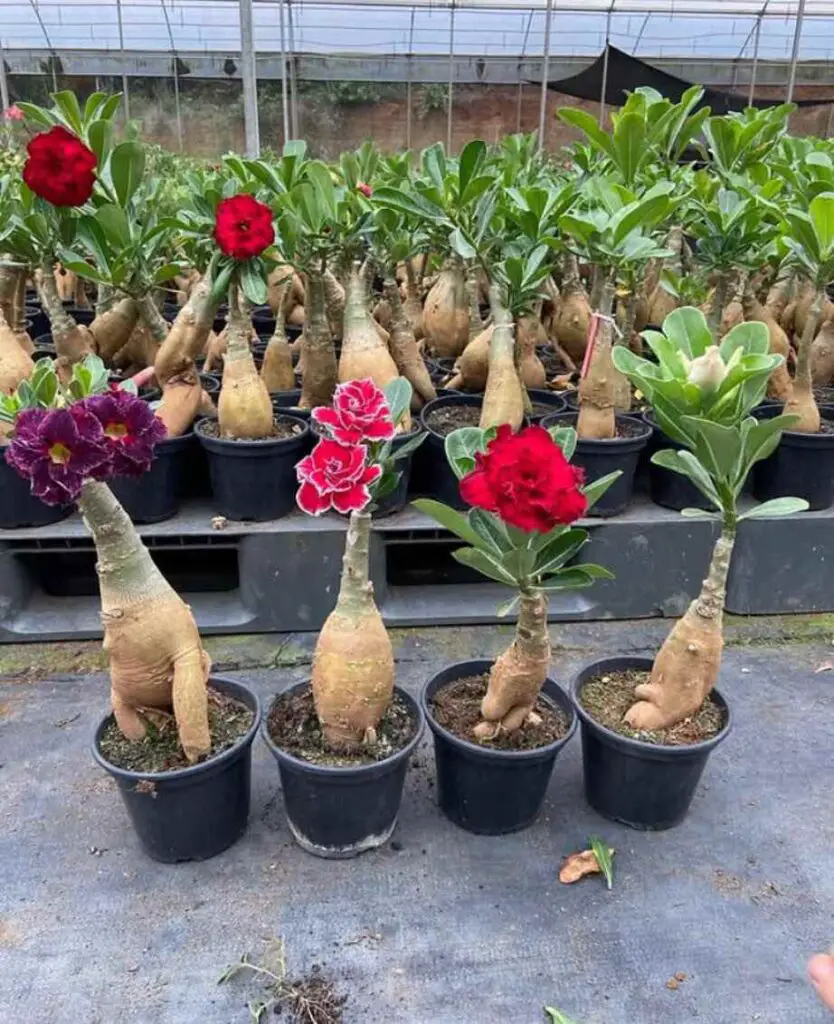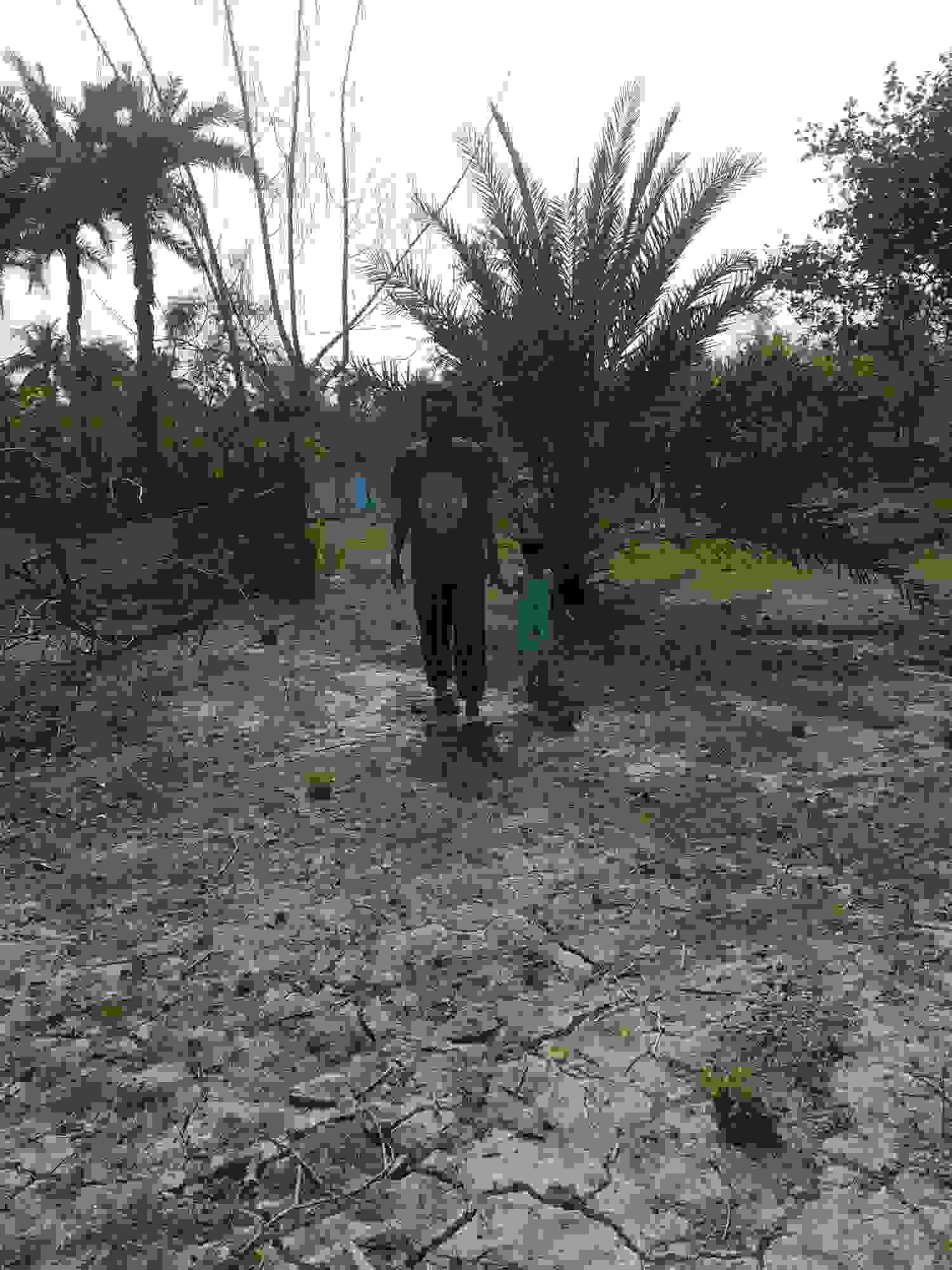Fertilizing desert roses properly can mean the difference between a plant that merely survives and one that thrives with vibrant blooms. If you’re wondering how to fertilize desert rose, you’ve come to the right place. This eye-catching succulent may look tough, but it appreciates the right nutrition in the right way.

When to Fertilize Your Desert Rose
Timing plays a critical role in how effective your fertilizer will be. Desert roses have specific growth cycles, and understanding when to feed them can maximize their flowering potential and overall health. Knowing when to fertilize your desert rose ensures you’re not wasting nutrients or stressing the plant.
Best Times to Fertilize:
- Spring (Early Growth Stage): Start fertilizing once you see new leaves sprouting. This is usually in early to mid-spring when the plant comes out of dormancy.
- Summer (Active Growth Period): Continue fertilizing every 4–6 weeks during summer, when the plant is actively growing and flowering.
- Fall (Taper Off): Gradually reduce feeding as temperatures cool. Stop entirely once the plant begins preparing for dormancy.
- Winter (Dormant Stage): Do not fertilize during winter dormancy, especially if your plant is indoors and not actively growing.
Keep in mind that over-fertilizing during the wrong season can lead to salt buildup in the soil or weak, leggy growth. Always observe your plant’s growth stage before applying any feed. A good rule of thumb is: fertilize only when it’s actively growing.
Choosing the Right Fertilizer
Selecting the correct fertilizer is key to healthy growth and abundant blooms. Desert roses (Adenium obesum) require a balanced nutrient mix, but not just any fertilizer will do. You’ll need a formula that supports both flowering and root development without promoting excessive foliage growth.
Recommended Fertilizer Types:
- Balanced Fertilizer (10-10-10 or 20-20-20): Ideal during the growing season for overall health.
- High-Phosphorus Fertilizer (e.g., 10-30-10): Encourages blooming and is especially useful during the flowering period.
- Slow-Release Granules: A good option if you prefer low-maintenance feeding.
- Liquid Fertilizers: Offer quicker absorption and allow for more precise nutrient control.
What to Avoid:
- Avoid high-nitrogen fertilizers (like lawn fertilizers) which may cause leggy growth.
- Skip any product not suited for succulents or cacti, as they may contain excess salts or nutrients.
Always read the label and choose fertilizers specifically marked safe for flowering plants or succulents. The right formula will support the plant’s thick caudex, vibrant leaves, and frequent blooms without risking root damage or nutrient imbalances.
How to Fertilize: A Step-by-Step Guide
Applying fertilizer correctly is just as important as choosing the right one. Follow these simple steps to ensure your desert rose gets the nutrients it needs without risking root burn or overfeeding.
Step 1: Water Before Fertilizing
Always water your desert rose lightly before applying fertilizer. This helps prevent root damage and allows nutrients to be absorbed more effectively.
Step 2: Mix the Fertilizer Properly
For liquid fertilizers, dilute according to label instructions—usually half-strength is sufficient for desert roses. If using granules, follow the recommended dosage and scatter evenly around the base of the plant.
Step 3: Apply the Fertilizer
- Pour or sprinkle the fertilizer around the root zone, not directly on the stem.
- Avoid getting any on the leaves or trunk to prevent chemical burns.
- For potted plants, make sure excess fertilizer can drain out properly.
Step 4: Water Again (If Needed)
Lightly water again after applying granular fertilizers to help nutrients soak into the soil. Skip this step for liquid feeds that are already in solution.
Step 5: Repeat as Needed
During the growing season, fertilize every 4–6 weeks. Monitor your plant’s response and adjust frequency as necessary. Always skip fertilization during winter dormancy.
Proper application keeps your desert rose strong, vibrant, and full of blooms.
Signs Your Desert Rose Needs Fertilizing
Even hardy plants like the desert rose show signs when they’re hungry for nutrients. Recognizing these symptoms early helps you correct deficiencies before they stunt growth or reduce blooming.
1. Poor or No Flowering
If your desert rose stops blooming during its active growing season, it might not be getting enough phosphorus. Fertilizers high in phosphorus (like 10-30-10) can stimulate blooming.
2. Yellowing Leaves
Yellow leaves, especially older ones, can indicate a nitrogen deficiency. While too much nitrogen is harmful, a lack of it can weaken the plant and reduce foliage health.
3. Stunted Growth
Slow or no new growth during spring and summer may signal that your desert rose needs a nutrient boost. This can happen if the plant has exhausted the nutrients in the soil or potting mix.
4. Pale or Discolored Leaves
Leaves that appear pale, dull, or have irregular color patterns may point to a general nutrient imbalance, especially potassium or magnesium deficiency.
5. Weak Stems or Small Leaves
Thin stems and smaller-than-usual leaves can result from insufficient nutrients, particularly if the plant has not been fertilized for several months.
When you spot these signs, it’s time to adjust your fertilizing schedule or switch to a more balanced or specialized formula. Always make changes gradually and observe how your plant responds.
Common Fertilization Mistakes to Avoid
Fertilizing your desert rose seems simple, but a few common mistakes can harm the plant more than help it. Avoiding these errors ensures your plant stays healthy and blooms beautifully.
1. Over-Fertilizing
Too much fertilizer can burn the roots and lead to salt buildup in the soil. This often results in leaf drop, yellowing, or even root damage. Always follow label instructions and use half-strength doses for liquid fertilizers when in doubt.
2. Fertilizing During Dormancy
Desert roses go dormant in colder months. Fertilizing during this time wastes nutrients and can stress the plant. Hold off on all feeding from late fall through winter, especially if the plant is indoors or growth has slowed.
3. Using the Wrong Type of Fertilizer
Avoid high-nitrogen fertilizers designed for lawns or leafy plants. These encourage excessive foliage growth and reduce flowering. Instead, choose a balanced or bloom-boosting fertilizer suited for succulents or flowering plants.
4. Skipping Watering Before Fertilizing
Applying fertilizer to dry soil can shock the roots. Always water the plant slightly before feeding to help dilute and absorb the nutrients safely.
5. Inconsistent Feeding Schedule
Feeding too sporadically can disrupt growth. Try to stick to a consistent schedule during the growing season to keep your desert rose thriving.
By steering clear of these common missteps, you’ll give your desert rose the best chance to grow strong and bloom boldly.
Integrating Desert Rose into Your Home Decor
The desert rose isn’t just a garden beauty—it can also be a striking indoor accent. With its sculptural form, thick caudex, and bright blooms, this plant brings elegance and a touch of the exotic to your living space.
1. Choose the Right Pot
Decorative pots can enhance the desert rose’s aesthetic. Consider:
- Terracotta or ceramic pots for a natural, earthy vibe.
- Modern planters with clean lines for a contemporary look.
- Pots with bold colors or patterns to complement its flowers.
Make sure the pot has proper drainage to prevent root rot.
2. Placement Ideas
- Window sills and sunny corners: Desert roses need bright light, ideally 6+ hours of direct sun.
- Entryways or living rooms: Their unique trunk and blooms make them a natural conversation starter.
- Minimalist spaces: The plant’s sculptural silhouette stands out beautifully in uncluttered areas.
3. Pairing with Decor
- Match your desert rose with succulents or cacti for a desert-themed arrangement.
- Surround it with stones or sand in the pot to give a clean, zen-like appearance.
- Use stands or shelves to vary height and visual interest.
By thoughtfully integrating desert roses into your interior design, you can enjoy both their ornamental beauty and easy-care nature year-round.
Dealing with Pests and Fungal Issues
Even a tough plant like the desert rose can fall victim to pests and fungal problems if not properly cared for. Identifying these issues early and taking quick action can save your plant from serious damage.
Common Pests:
- Mealybugs: These appear as white, cotton-like clumps on leaves and stems. Remove them with a cotton swab dipped in rubbing alcohol.
- Spider Mites: Tiny red or yellow mites that create webbing under leaves. Treat with neem oil or insecticidal soap.
- Aphids: Small green or black insects that cluster on new growth. Blast them off with water or use a mild insecticide.
Fungal Problems:
- Root Rot: Caused by overwatering or poor drainage. If leaves start yellowing and the base feels mushy, remove the plant, trim off rotten roots, and replant in dry, well-draining soil.
- Leaf Spot or Mildew: Look for black spots or powdery white coatings on leaves. Improve air circulation and treat with a fungicide if needed.
Prevention Tips:
- Water only when the soil is dry to the touch.
- Avoid getting water on the leaves or stem base.
- Use sterilized soil and a pot with drainage holes.
- Inspect the plant regularly for early signs of trouble.
Staying proactive with care and hygiene will help your desert rose stay healthy and pest-free.
Final Thoughts
Fertilizing your desert rose the right way ensures vibrant blooms, strong growth, and long-term health. By choosing the right fertilizer, applying it correctly, and avoiding common mistakes, you’ll help your plant thrive season after season. Pay attention to its needs, and your desert rose will reward you beautifully.

I’m Shofi, a passionate gardener and blogger. I have 10+ years of experience in gardening and hold certifications in horticulture and garden design. I share my knowledge and skills through my garden blog to inspire and educate others on the joys of gardening. I try to provide valuable information and create a community for gardeners of all levels to connect and learn. My ultimate goal is to inspire others to start their own gardens and connect with nature.

